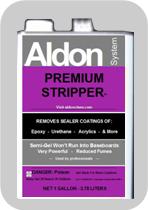The best practice is to maintain as much as possible the natural traction of the surface and not build up gloss with sealer that reduces that desired traction level. That means using a sealer that penetrates down into the surface and is not creating a coating. Below are some of the different kinds of situations where this is a consideration.
Swimming Pool Decks
Choose a sealer that is no gloss or very low gloss from the Surface Type . You want to retain the natural traction qualities of the surfacing and not decrease that traction with gloss.
Glazed Tile Surface
The following applies only to "fired glazed ceramic tile". For sealed surfaces, see below.There are contractors that treat a glazed tile with a hydrofluoric acid compound to achieve an invisible etch to the glaze. When this surface is wet, it actually and amazingly grips more than when dry. We do not produce these chemicals because they are dangerous to work with and require a professional applicator.
Check with your local tile dealers, the yellow pages, or an internet search engine.
Sealed Surface
If an Aldon sealer is too slippery when wet, see the product page and label for information about how to remove enough of the sealer gloss level to get down to the texture of the flooring material. That texture needs to be exposed to provide additional traction.If another companies sealer, you will need to remove it with Aldon

Premium Stripper and reveal the surface texture. See the page for your surfacing in the "Surface Types" section for the best sealer for your situation.
Shower Floor Tips
Using a surfacing that is not larger than 3" x 3" creates more grout joints and the grout joints provide additional traction.
If a shower floor needs to be sealed, never use a sealer that will create gloss. The danger of slipping is too great. Aldon "Same Day Sealer" does not change surface characteristics, but test and verify before sealing the floor.
If the shower floor is already slippery, the best and safest answer is to use the appliques (some are clear) made for that purpose and available from many hardware stores. 
If the floor has not been installed and the surface type is slippery - consider using sizes under 3" square so that the grout joints provide traction.
What about adding something to the sealer, or to the surface, before applying the sealer with the goal of improving traction.
This has been done many times, but adding some sort of grit to the situation usually does not work out well long term. If the sealer needs to be replaced in an area, so does the grit. Also, the process is difficult to control to achieve even dispersal of the grit.
In many cases, Aldon "Lifeguard" will make a naturally slippery dry tile less slippery. "Lifeguard" has components in it for that purpose. However, when wet is a much different situation and almost anything will be more slippery when wet.
Note:
This information is provided for your research and decision making. We cannot know if it is the most appropriate answer to your situation and suggest testing and evaluation. Any information provided by Aldon is only information, not a recommendation to take any particular action.